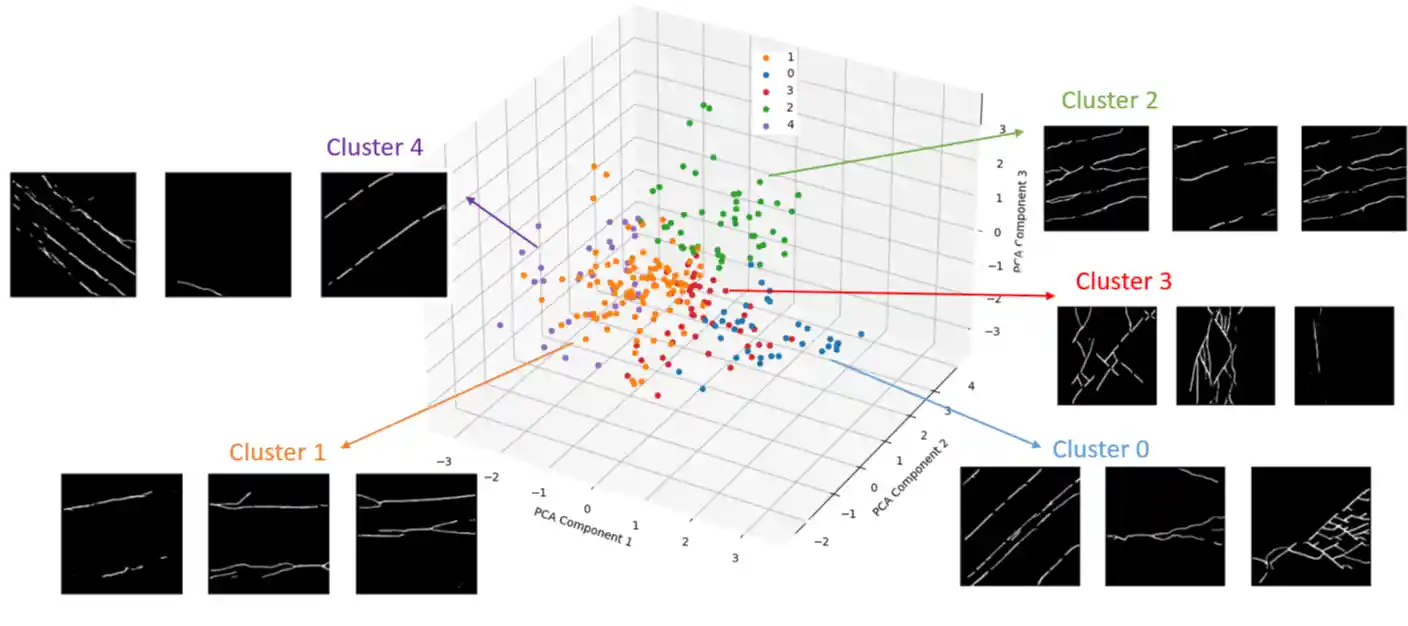Probabilistic Predictive Models for Silicon PV Cell Crack Stress and Power Loss
DuraMAT has published open-source tools to identify and parameterize photovoltaic (PV) cell cracks for statistical representation and power loss prediction. We’ve also updated finite element models to replicate our experimental results and generate data to train our predictive model.
When cell cracks occur in PV modules, they often cause very little initial power loss. However, cracks evolve over time and can cause up to 20% power loss in a module, leading to mismatch in that module and string/array. System owners and insurers need to know how much power loss to expect over time for planning, valuation, and insurance claim purposes.
Through a combination of experiments and finite element analysis, we are generating data to build statistical and machine learning tools to predict power loss associated with cell cracks as they undergo thermomechanical stress. The final product will be a pipeline that reads in electroluminescence images and reports the expected power loss associated with imparted thermomechanical stress.
Core Objective
Multi-Scale, Multi-Physics Model
Team Members
Jennifer Braid, James Hartley, Norman Jost, Benjamin Pierce, Ojas Sanghi, and Brandon Byford at Sandia National Laboratories; and Mariana Bertoni and Isabel Schinella at Arizona State University
Impact
This year, we published open-source tools to automatically identify, segment, parameterize, and cluster PV cell cracks in electroluminescence images, and even generate representative cracks based on input data.
Learn More
Jost, Norman, Emma Cooper, Benjamin Pierce, Brandon Byford, Ojas Sanghi, and Jennifer Braid. 2024. “Solar Cell Crack Image Generation for Power Loss Prediction.” In Proceedings of the 41st European Photovoltaic Solar Energy Conference and Exhibition.
Cell Crack X-Ray Topography (XRT), DuraMAT DataHub
Pvcracks: Crack Masks for Variational Autoencoder (VAE) - Data and Resources, DuraMAT DataHub
Pvcracks: Trained VAE Model - Data and Resources, DuraMAT DataHub
Contact
To learn more about this project, contact Jennifer Braid, Sandia.

Cell stresses as measured using XRT (left) and predicted in a finite element analysis model, showing similar distributions and magnitude around wires. Images from Mariana Bertoni, Arizona State University, and James Hartley, Sandia

Clustered principal component analysis results from VAE representations of PV cell cracks in our training data. Images from Norman Jost, Sandia